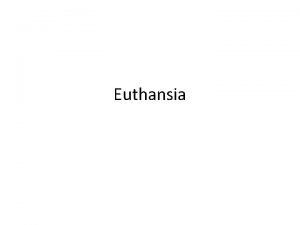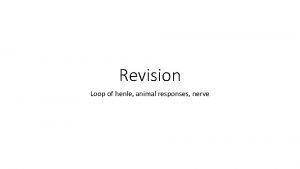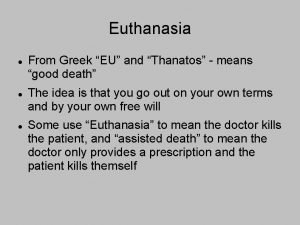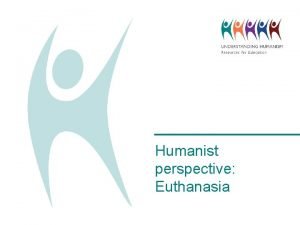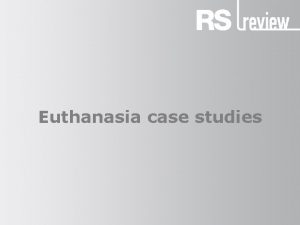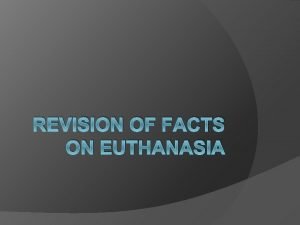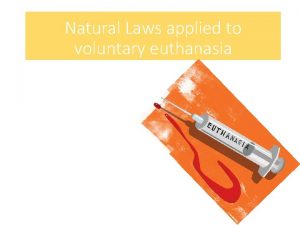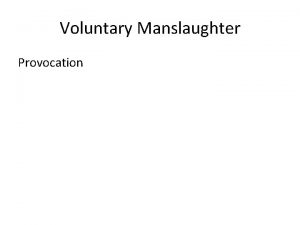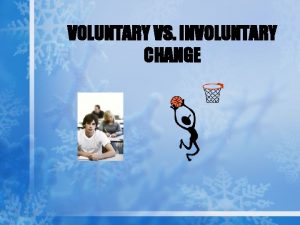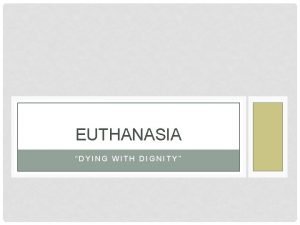Euthansia Voluntary Involuntary Passive Voluntary Passive Euthanasia Involuntary










- Slides: 10

Euthansia

Voluntary Involuntary Passive Voluntary Passive Euthanasia Involuntary Passive Euthanasia Active Some Background: Voluntary Active Euthanasia Patient consent. Involuntary Active Euthanasia No patient consent. Involve taking the patient off livepreserving treatments. Involve giving the patient a life-ending “treatment”.

Terminology • Active euthanasia—Performing an action that directly causes someone to die; “mercy killing” • Passive euthanasia—Allowing someone to die by not doing something that would prolong life

Euthanasia • Voluntary euthanasia—Euthanasia performed when competent patients voluntarily request or agree to it • Involuntary euthanasia—Bringing about someone’s death against her will or without asking for her consent while she is competent to decide • Nonvoluntary euthanasia—Euthanasia performed when patients are not competent to choose it for themselves and have not previously disclosed their preferences

Active/Passive Euthanasia • Some contend that the distinction is crucial: active euthanasia is killing, but passive euthanasia is letting die. • The AMA has sanctioned the distinction. • Some argue that there is no morally significant difference between mercifully killing a patient and mercifully letting the patient die.

Physician-Assisted Suicide • A patient’s taking his or her own life with the aid of a physician • The AMA has denounced PAS. • Many people (including some physicians) support its use. • It is legal only in Oregon.

Definitions of Death • Traditional view—Death is the cessation of breathing and heartbeat. • Standard in law and medicine—Whole brain view: An individual should be judged dead when all brain functions permanently stop. • Alternative view—Higher brain standard: Individuals are dead when the higher brain functions responsible for consciousness permanently close down.

Active Voluntary Euthanasia • Arguments for: – Autonomy: Respecting people’s inherent right of self-determination means respecting their autonomous choices about ending their lives. – Beneficence: If we are in a position to relieve the severe suffering of another without excessive cost to ourselves, we have an obligation to do so.

Active Voluntary Euthanasia • Arguments against: – Moral difference between killing and letting die: Killing is worse than letting die, so giving a patient a lethal injection to effect an easy death is wrong, but disconnecting his feeding tube may be permissible. – Moral difference between intending someone’s death and not intending but foreseeing it: The former is wrong; the latter is permissible.

The Autonomy Argument for Euthanasia • Autonomous persons should have the right to choose how they will live and how they will die. • The right is preeminent, limited only when their choices might bring harm to others. • This right to die, though strong, does not necessarily compel others.
